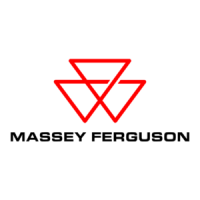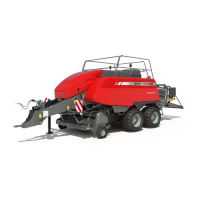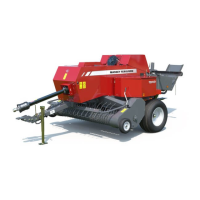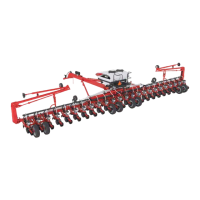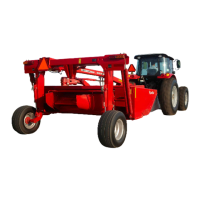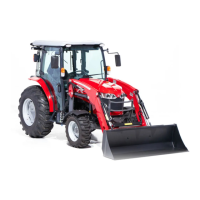3. Make sure that you disengage the PTO shaft, stop the tractor engine and remove the key.
4. Release the pressure of the hydraulic system before you disconnect the hydraulic hoses. Refer to the
tractor manual.
5. Apply the manual brake on the machine.
6. Use the 2 wheel chocks against one of the transport wheels.
1.3.11 Use the correct tools
• Always use the applicable equipment and the approved tools for repair and maintenance procedures..
1.3.12 Correctly lift the machine
• Do not lift the machine with equipment that is not of the applicable type.
• Do not work under a machine with only a jack to hold it up.
• You must use wheel chocks to prevent movement of the machine.
1.3.13 Correct lifting equipment
• Follow the recommended procedures in the manual for the removal and installation of the components
or systems.
• The points for lifting the machine with a suitable jack are shown in the safety decal location section.
• It is dangerous to lift the machine incorrectly. This can cause injury to personnel or cause damage to the
machine.
• Make sure that you use the correct lift equipment to hold or lift heavy components.
1.3.14 High pressure fluids
• If the high pressure hydraulic oil goes into the skin, get medical aid quickly.
• Set the machine to OFF and let it become cold before you examine the fluids. Be careful when you
remove the radiator cap, electrical plugs, grease fittings or pressure taps.
• Do not open hydraulic connections while the machine operates. Release the hydraulic pressure before
you do maintenance or repairs.
• Tighten all connections before you pressurize the system.
• Examine for leaks with a piece of wood or cardboard to prevent injury to the skin.
• High pressure hydraulic fluid or diesel fuel can cut the skin, burn or cause injury to the eyes.
• If hydraulic fluid or diesel fuel causes injury to personnel, get medical aid quickly.
1.3.15 Do not use heat near pressurized fluid lines
• Do not cause heat by welding, soldering or flames near pressurized fluid lines or other flammable
materials.
• Pressurized lines can easily leak when heat moves from areas where you do work.
• Flammable gases can occur with the use of heat near pressurized fluid lines. If accidental ignition
occurs, it can cause dangerous burns to the skin.
1.3.16 Welding or the use of heat on parts
Welding and the use of heat on parts can make dangerous, poisonous and or flammable fumes. Follow
these precautions:
• Remove paint, dirt and fluids from the area where you do work.
GUID-E341493F-043F-4F5C-B709-67EC6256E0AC [V1]
GUID-9E17FFA1-99D8-4760-B5AC-66CC34B6982E [V1]
GUID-1594B221-14EB-489E-B7D4-72B6044432C3 [V2]
GUID-552E786C-8E27-48BF-88DA-A48621BD8656 [V1]
GUID-63536D68-E58F-4FEA-A047-ED20C19A5194 [V1]
GUID-AF3F9323-F897-450F-8C3B-4B43E86C6B3A [V1]
1. General
1-13
1764-MF-EN01-SM NA
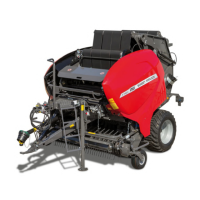
